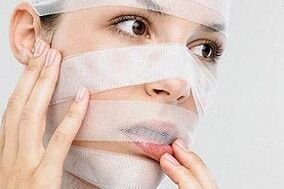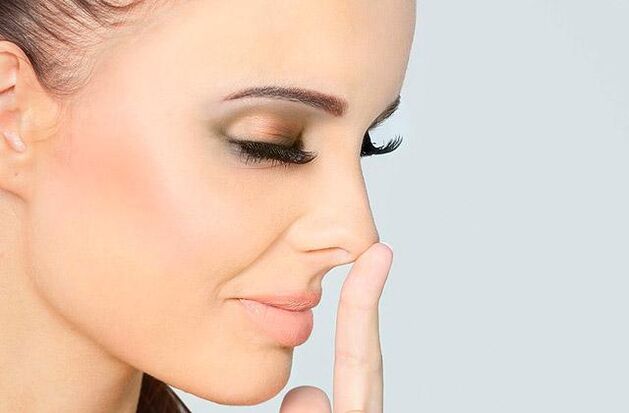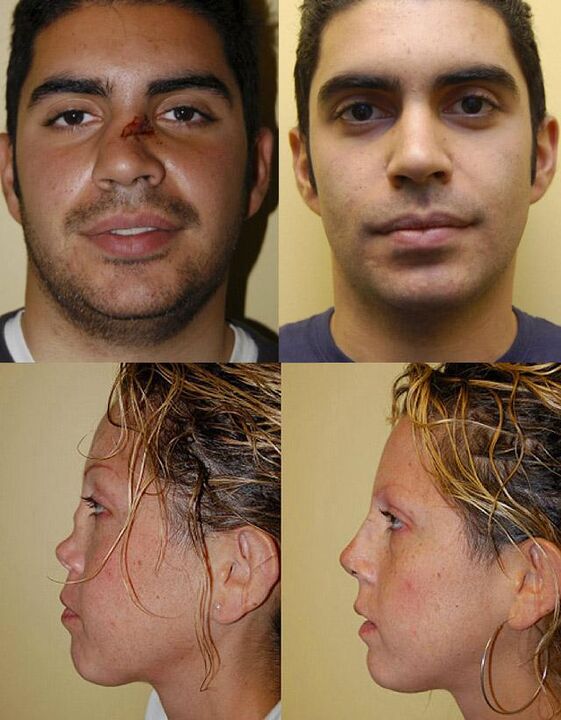
Rhinoplasty (nasal plastic surgery) is the repair, restoration, correction of nasal structures using plastic surgery methods. Used for medical and aesthetic reasons.
Despite its prevalence, nose augmentation surgeries are still considered one of the most difficult.
Rhinoplasty has been performed for thousands of years. Ancient manuscripts testify to the successful practice of such procedures long before the Common Era.
Medicine is much more advanced than ancient physicians, and modern rhinoplasty is more of a cosmetic procedure than a medical necessity.
Tips for rhinoplasty
Each plastic surgery is a complex creative process (in this case, nasal breathing) that combines the solution of aesthetic problems with the preservation or restoration of specific functional features of the body.
Thus, rhinoplasty can be performed for therapeutic and aesthetic purposes. The optimal age for this is 25-35 years.
Medical indications are:
- congenital deformity of the nasal septum;
- turbine polyps and hypertrophy;
- post-traumatic changes in traumatic injuries and bones, cartilage, physiological (due to uneven tissue development) or compensatory curvature of the nasal septum;
- possible or complete absence of nasal breathing.
Changes in the proper anatomical structure of the nose are often the cause of functional disorders and pathological conditions - shortness of breath, atrophy or hypertrophy of the nasal mucosa, rhinosinusitis, otitis media, frequent respiratory diseases, nocturnal snoring.
In addition, in children, such defects can lead to chronic oxygen starvation of the brain, which leads not only to physical but also mental retardation, affecting mental development and behavioral reactions. Therefore, rhinoplasty can be performed on children under 18 years of age.
More than 60% of rhinoplasty causes the patient to want to improve the shape of the nose in order to achieve full adaptation of appearance. Plastic surgery services are becoming increasingly popular. Aesthetic indicators for rhinoplasty are divided into two major groups:
- objective - these are disproportionate and unattractive dimensions or the shape of the nose;
- subjective or psychological: there is no specific criterion for evaluating beauty, each person has his own stereotype, and therefore may not like his nose for personal reasons only.
These causes often affect people's professional and personal relationships, lead to complexes of dissatisfaction, and lead to their own inferiority in their feminine environment.
Rhinoplasty for aesthetic purposes is indicated in the following cases:
- disproportionate size of the nose relative to the entire face - too large or, conversely, too small;
- congenital or acquired deformities;
- curvature of the nasal septum;
- enlarged nostrils, hump;
- fork, lowered or very raised, asymmetrical tip, as well as incompatibility with the height of the nasal dorsum;
- saddle image;
- aesthetically unsatisfactory result of the previous operation.
In many cases, the medical and aesthetic indicators are the same and are the result of the same anatomical defects.

Types of rhinoplasty
According to the purpose and the method of surgery, rhinoplasty is divided into:
- The goal is reconstructive reconstruction of anatomical abnormalities resulting from improper intrauterine development, traumatic injuries, or disease.
- Aesthetic - correction of existing shortcomings.
According to the same criteria, there are several types of rhinoplasty:
- Reduction or enlargement of the nose.
- Rear alignment - correcting a saddle depression or removing a belt.
- Correction of aesthetic defects of the tip.
- Septum correction (septoplasty).
- Post-traumatic reconstruction of the structure.
All types of operations are divided into:
- primary;
- average;
- repeated.
Introduction techniques
Depending on the access options, the following methods are used when performing rhinoplasty:
- Closed rhinoplasty,that incisions may occur in the nasal cavity. The closed entrance is divided into marginal (along the inner surfaces of the nasal wings), transseptal, inter- and transchondral. After the incision, the soft tissues are separated (separated) from the cartilage and bones that form the framework that allows the necessary manipulations to be performed freely. Closed rhinoplasty is less traumatic than open rhinoplasty and eliminates arterial damage and tissue nourishment, and postoperative scars are completely invisible because they are located in the nasal cavity. It is most commonly used for aesthetic rhinoplasty.
- Open rhinoplasty- The incision runs along the columella (the part of the skin between the nostrils) and the nasal wings when it joins the lip. The technique is used when it does not allow the task to be achieved in another (closed) way. It allows you to lift the soft tissues and cartilage, get enough access to the inner parts of the nose and perform manipulations under constant visual control. Open rhinoplasty is required to correct particularly serious changes and technically complex and significant operations - significant deformation of the nose, especially with lateral displacement; combination of nasal deformity with defects such as "cleft lip" or cleft palate cleft; Reconstruction using the vaccine. The disadvantage of open rhinoplasty is the significant postoperative scar formation, as well as the obligatory damage to the columella vessels, resulting in significant and long-term postoperative tissue edema.
Each type of rhinoplasty is performed under one type of general anesthesia and usually lasts 1-2 hours. Sometimes their duration can reach three or more hours.
How is rhinoplasty performed?
The operation is performed in the following sequence:
- correction of the nasal septum is performed;
- nasal congestion is reduced if necessary;
- if it is necessary to create an equal profile, the nasal passage is corrected;
- the bones are broken and modified to narrow the nasal pyramid;
- straightens the nose;
- tip correction.
Revision rhinoplasty
If there has already been surgery in this area, the nose is considered re-plastic. The final formation of the nose after plastic surgery occurs within six months - 1 year. This period is optimal for re-operation. It is carried out in the following cases:
- condition of impossibility to reach the goal at one stage;
- unsatisfactory results of the initial operation;
- the need to correct the remaining problems after the initial rhinoplasty.
According to world statistics, 25-30% of patients undergoing primary rhinoplasty need a second corrective surgery. This is considered normal. It usually does not last more than half an hour and is performed under local anesthesia. Corrective revision rhinoplasty allows you to correct scar defects and bring the shape of the nose to an aesthetic result that will meet the needs of the surgeon and the patient.
Recurrent rhinoplasty is very difficult to perform in cases of poor initial or unfavorable course of the rehabilitation period, which often depends on the individual characteristics of the organism and complications. Such operations require more in-depth research and better preparation. According to one of the options, they represent a full-fledged plastic, but as a rule, they are more complex and time-consuming. Minor defects that occur during repeated plastic surgery can lead to the final distortion of the image, which leads to an open deformation of not only the tip, but also the entire nose.
Complications and preparation for surgery
Rhinoplasty is considered to be one of the most difficult plastic surgeries, the outcome of which depends on the skill and experience of the surgeon. Complications occur in 4-15% of cases. It can occur during surgery (bleeding, tearing of the skin, rupture of the muco-cartilage wing, violation of the integrity of the bone pyramid, fracture of the bone marrow, etc. ) and after surgery.
Possible complications after rhinoplasty:
- functional - atrophic rhinitis, difficulty in nasal breathing, loss of smell, temporary or permanent decrease or complete loss of sensitivity of the nose and upper lip;
- aesthetic - not to change or worsen previous defects;
- psychological - the patient's dissatisfaction with the results of plastic surgery;
- infectious - long-term swelling and inflammation, milk;
- nasal skin pigmentation, vascular formation, adhesions of the mucous membrane and rough scars;
- recurrent nosebleeds and soft tissue or cartilage necrosis.
The preparation consists of the following:
- Consultation with a plastic surgeon, whose technical capabilities are determined to fulfill the patient's wishes.
- General research - clinical and biochemical blood tests, blood clotting test (coagulogram), general urinalysis, tests for hepatitis, HIV, syphilis (RW), ECG.
- Endoscopic examination of the nasal cavity to identify images of the paranasal sinuses, accompanying anomalies and pathological changes - (if necessary) to conduct special studies.
- A computer simulation that allows the patient to compare the initial condition of the nose with future rhinoplasty.
- Advice from a therapist and specialists (in case of chronic diseases).
- Examination by an anesthesiologist after all examinations.
- Two weeks before surgery, refuse to take drugs that affect blood clotting processes - acetylsalicylic acid and analogues, anticoagulants.
- Stop taking sedatives and sleeping pills on the day of the intervention.
Contraindications and rehabilitation
Absolute contraindications for rhinoplasty:
- presence of any chronic systemic diseases in severe form (endocrine, cardiovascular, pulmonary);
- acute infectious diseases;
- blood clotting disorders;
- menstrual days.
Basic recovery from rhinoplasty lasts up to 3 weeks. However, when the results are evaluated, the period for complete completion of the rehabilitation period is set by the doctor and is 6-12 months. Certain restrictions must be observed during this period.
Plaster and sutures are removed 1-1, 5 weeks after the intervention. For the first two weeks, do not wash with warm water or take a hot bath, as bleeding, bruising and swelling may occur when it spreads all over the face and neck. You only need to lie on your back in a high position, which helps to facilitate breathing and reduce swelling. It is recommended to use face protection in dusty places. Avoid bending and lifting weights.
You should also stop wearing glasses and wearing tight or heavy hats for 3 months. You can't go to the pool and sunbathe for 3 months. In hot weather and in the sun, an umbrella or a wide-brimmed hat is recommended.
When planning rhinoplasty options, an experienced surgeon follows the principle of three types of restrictions: restrictions set by the surgeon himself; restrictions imposed by the patient; limitations related to the patient's condition and anatomical features of the nose.



Price
The cost of the operation depends on the complexity of the adjustment.
Reviews
Review of a woman
"I always had complexes due to the shape of my nose. It was very long, a stump and the tip of the nose looked double-sided. Last year I decided to have rhinoplasty. If I had done it earlier, my life would be better now. All the defects were removed. I didn't even know the defect. they restored the septum. My nose is as perfect as mine. "
Reviewing a person
"After breaking my nose several times, the nasal septum changed position. I could not breathe normally, I snored heavily at night. Diagnosis showed temporary shortness of breath during sleep. The nose looked ugly, it was moved to one side. I did. I'm happy with the result. Now my nose is as normal as it was before the fracture. It's always breathing and I don't snore anymore. "
Rhinoplasty is not always based on whim, but in most cases on objective necessity. It is important to choose a competent surgeon and make sure there are no contraindications to the procedure.




















